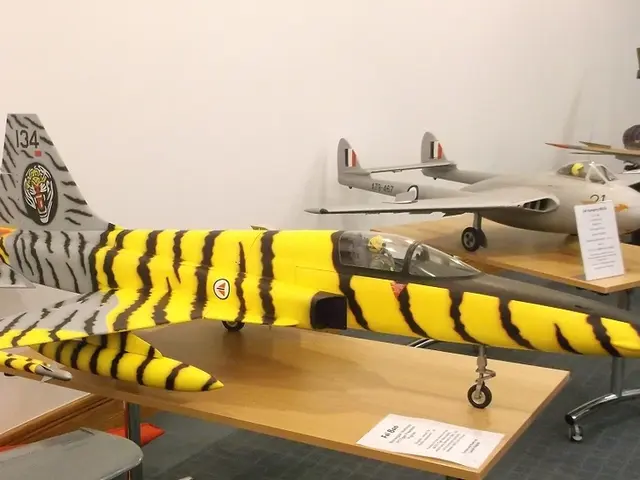Groundbreaking Innovations Inspired by Nature's Wonders: A Global Impact
Nature's wonders have always served as a starting point for human ingenuity. From the swooping dance of birds in the sky to the resilient tenacity of plants on the ground, the natural world brims with solutions that spark human innovation. This relationship between nature and technology is often called biomimicry - the practical emulation of nature's complex designs and processes to tackle human problems. So, let's dive into twelve fantastic inventions that prove the power of taking inspiration from our enchanted planet and her myriad creatures, demonstrating how, in sketching the course of human progress, nature has held the pencil.
Velcro: The Tangling Friend
The saga of Velcro begins with a simple stroll through the woods. Swiss inventor, George de Mestral, noticed how burrs stubbornly clung to his clothing and his dog's fur. His intrigue led him to examine these clingy burrs under a microscope and discover their tiny hooks latched onto fabric loops. This realization paved the way for the creation of Velcro, a hook-and-loop fastener that transformed the textile industry. Its applications spread from clothing to aerospace, underscoring the simple yet essential impact of nature's designs.
Flight: Birds of a Feather
Birds have fascinated humans since time immemorial with their soaring grace. The Wright brothers, the pioneers of aviation, stared at birds in flight and studied their wings to comprehend lift and control. They observed how birds angled their wings for direction and incorporated these principles into their plane designs. This led to the successful invention of the first powered aircraft. Aviation industries still find inspiration in avian flight, employing wing shapes and materials that mimic bird feathers to boost efficiency and silence.
Adhesion: Gecko Power
Geckos possess an extraordinary ability to traverse walls and ceilings effortlessly, propelled by microscopic structures on their feet that create van der Waals forces. Scientists learned from these creatures and manufacture adhesive materials that mimic the gecko's grip, leaving no residue and enabling repeated use. These gecko-powered adhesives are making waves in robotics, medical devices, and space exploration, offering ingenious solutions to various challenges.
Skin Deep: Shark Skin Tech
Sharks are famed for their speed and agility in water, thanks to the textured surface of their skin, adorned with tiny scales called denticles that minimize drag and discourage algae and barnacle growth. Engineers have developed materials that mimic sharkskin to enhance boat and submarine efficiency. This adaptation can also be found in swimsuits, offering reduced drag that significantly improves athletes' performance. This demonstrates how nature's adaptations can lead to groundbreaking innovations in human technology.
Clean Machines: The Lotus Effect
The lotus flower's ability to stay clean in muddy waters has inspired the creation of self-cleaning surfaces. The micro- and nano-structures on lotus leaves cause water droplets to bead up and roll off, carrying dirt with them. This phenomenon, referred to as the Lotus Effect, has been replicated in coatings for windows, textiles, and paints. These surfaces require less cleaning and maintenance, proving beneficial for both the environment and economy, by reducing the reliance on chemical cleaners.
Silk Strength: Spider Web While You Sleep
Spider silk is one of the strongest natural materials, renowned for its tensile strength and elasticity. Scientists have dreamt of replicating its properties for various applications, such as sutures, bulletproof garments, and biodegradable fishing lines. By studying the proteins that form spider silk, researchers have synthesized artificial versions promising to revolutionize industries dependent on strong, lightweight materials. The pursuit of spider silk showcases the potential for nature-inspired materials to surpass existing technologies.
Architectural Marvels: Termite Mound Dreams
Termites may be small, but their architectural prowess is mighty. Termite mounds maintain constant internal temperatures despite external fluctuations, thanks to a natural ventilation system. Architects have been inspired by these structures to design energy-efficient buildings that regulate temperature without relying heavily on air conditioning. This biomimetic approach not only conserves energy but also enhances comfort, exemplifying how observing nature can lead to sustainable living solutions.
Kingfisher-Inspired Rocket Science
The kingfisher's beak enables it to dive into water with minimal splash, a feat that inspired engineers developing high-speed trains. The Shinkansen bullet train in Japan encountered issues with noise due to air resistance, but modeling the train's nose after the kingfisher's beak reduced noise and improved speed. This instance illustrates how natural adaptations can address modern engineering hurdles, bolstering performance while minimizing environmental impact.
Environmental Champions: Whale Fin Wind Turbines
The humpback whale's pectoral fins have unique bumps called tubercles, which enhance their maneuverability. Researchers copied this concept to improve wind turbine blades' efficiency by reducing drag and increasing lift. These whale-inspired turbines create more energy at lower wind speeds, paving the way for renewable energy accessibility. This breakthrough showcases the potential for nature-inspired designs to contribute to sustainable energy solutions.
Incandescent Nature: Bioluminescent Lighting
Certain organisms, like fireflies and deep-sea creatures, produce light through bioluminescence. Scientists have harnessed this phenomenon to develop energy-efficient lighting systems. By mimicking the chemical reactions that produce light in these creatures, researchers have created sustainable lighting solutions that consume less energy than traditional bulbs. This innovation marks a promising path towards reducing energy consumption and environmental burdens.
Water Harvesters: Beetle Tactics
Desert beetles survive in arid environments by collecting water from fog through their textured shells. This adaptation has inspired the development of water-harvesting technologies in water-scarce regions. Engineers have designed surfaces that mimic the beetle's shell, effectively capture water from fog, providing hope for addressing global water challenges. This example highlights how nature's solutions can be adapted to benefit human societies.
Problem-Solvers: Ant Algorithms
Ants are clever trouble-shooters and team players, particularly when it comes to finding food. Their behavior has inspired algorithms used in computer science for optimizing complex systems such as traffic flow and network routing. By mimicking the style ants communicate and make decisions, scientists have devised efficient solutions to complex problems. This paradigm showcases the potential for nature-inspired strategies to transform technology and improve human life.
In examining these twelve nature-inspired inventions, it becomes evident that nature is brimming with solutions to human challenges. By studying and emulating the intricate designs and processes found in nature, we can continue to develop innovative and eco-friendly technologies and designs that rival the efficiency and resilience of the natural world.
Article Authored by: Maria Faith Saligumba
Enrichment Data:
Overall: Biomimicry and nature-inspired designs contribute significantly to technological innovation and sustainable solutions by replicating the efficient and effective strategies found in nature. This approach involves researching, comprehending, and imitating the biological processes, structures, and functions of the natural world to create innovative, eco-friendly technologies and designs.
Contributions to Technological Innovation
- Inspiration from Nature Systems: Nature offers plethora of intricate systems that provide examples of efficiency. For instance, sharkskin-inspired surfaces have been used to develop surfaces that reduce drag, enhancing fuel efficiency in ships[2]. Similarly, the gecko's impressive adhesion ability has inspired the development of climbing devices and non-residual adhesives[6].
- Natural Materials and Processes: Biomimicry has led to the creation of novel materials and processes, such as mycelium-based construction materials that are both sustainable and robust[4]. These materials are often biodegradable and can help reduce waste.
- Sustainable Engineering Solutions: Biomimetic designs are increasingly being used in engineering to create more efficient and sustainable solutions. For example, termite mound-inspired buildings use passive cooling systems inspired by termite mounds, reducing energy consumption and improving comfort[7].
Contributions to Sustainable Solutions
- Energy Efficiency: By mimicking natural systems, such as the passive cooling of termite mounds, architects can construct buildings that require less energy for heating and cooling, diminishing environmental impact[1].
- Environmental Conservation: Biomimicry contributes to the development of eco-friendly products and technologies, such as sharkskin-inspired coatings that reduce the use of toxic cleaning agents by minimizing biofouling on ships[8].
- Regenerative Approaches: Biomimicry champions regenerative and circular economy practices, such as using fungi to decompose toxic chemicals in construction materials[5]. This strategy promotes sustainable development goals through reducing waste and encouraging ecological balance.
- The study of plants' resilience and adaptations in harsh environments, like desert beetles that harvest water from fog, sparks research in water-harvesting technologies for water-scarce regions.
- The remarkable ability of geckos to traverse walls and ceilings, latched onto by tiny hooks on their feet, inspires the production of adhesive materials with similar properties, offering ingenious solutions for robotics, medical devices, and space exploration.
- The Shinkansen bullet train designers took inspiration from the kingfisher's beak and its ability to dive into water with minimal splash, modeling the train's nose to reduce noise and improve speed, demonstrating how nature's adaptations can address modern engineering challenges.
- Nature's processes are at the forefront of innovation in the energy sector, with bioluminescent organisms inspiring the creation of energy-efficient lighting systems, consuming less energy than traditional bulbs and contributing to sustainable energy solutions.




